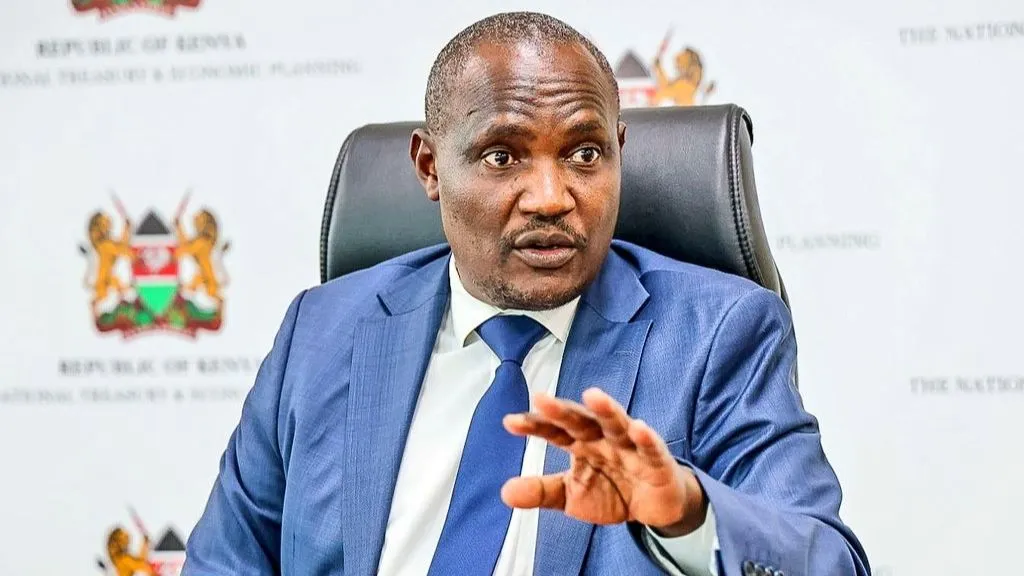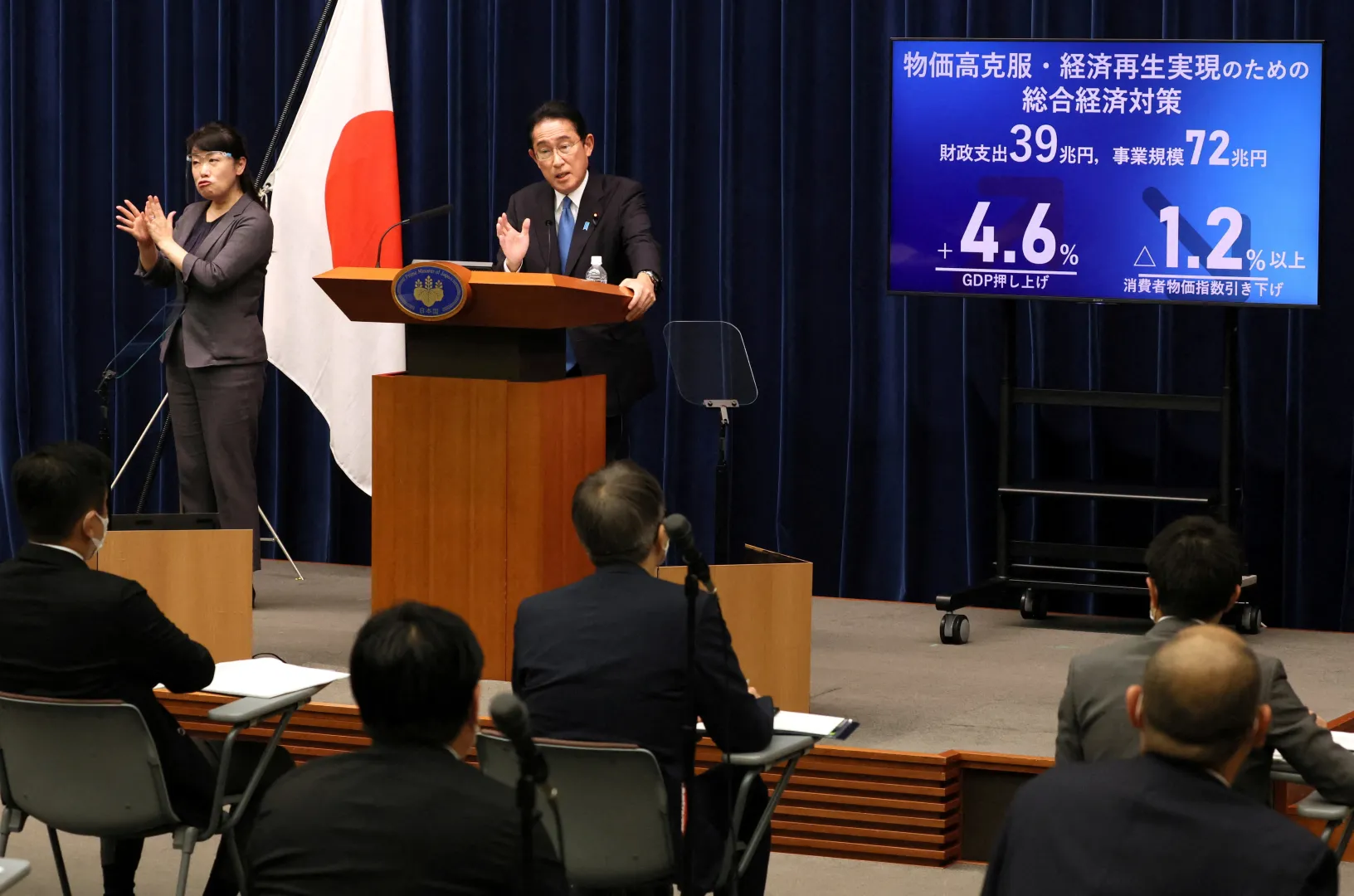Kenya’s public debt has escalated to an unprecedented KSh 11.5 trillion (approximately USD 88.5 billion) as of May 2025, marking a staggering increase of KSh 951 billion in just eleven months from June 2024’s KSh 10.56 trillion. This alarming surge underscores a deepening fiscal crisis and a mounting pressure on the country’s borrowing appetite, raising profound questions about economic stability and the welfare of ordinary Kenyans.
The rapid pace of debt accumulation has drawn sharp scrutiny, with comparisons to previous administrations highlighting the current government’s accelerated borrowing. While former President Mwai Kibaki borrowed an average of KSh 180 billion per year and Uhuru Kenyatta averaged KSh 600 billion annually, President William Ruto’s administration has accumulated KSh 951 billion in less than a year. This trajectory has ignited a fervent public debate, challenging the government’s fiscal promises and the tangible benefits derived from this extensive borrowing.
The Alarming Figures: A Deep Dive into Kenya’s Debt Composition
The latest data from the Central Bank of Kenya (CBK) and the National Treasury paints a stark picture of Kenya’s burgeoning debt. The KSh 11.5 trillion figure as of May 2025 represents a 10.3% increase from KSh 10.4 trillion recorded in May 2024, as reported by Cytonn Report. This rise is not confined to a single source but is a complex mix of both domestic and external obligations.
Domestic debt now stands at KSh 6.20 trillion, reflecting a significant 16.6% increase from KSh 5.3 trillion in May 2024. This surge in domestic borrowing is partly attributable to the government’s increased inclination towards local financing, driven by lower interest rates in the domestic market and constrained access to external financing, as noted by Cytonn. Within domestic debt, Treasury Bills (T-Bills) have expanded rapidly, surging to KSh 1.036 trillion as of July 4, 2025, reaching a new all-time high and reflecting continued refinancing pressures. Treasury Bonds (T-Bonds) debt stock also rose to KSh 5.11 trillion in July 2025.
Concurrently, external debt has jumped by USD 500 million in just two months, reaching USD 41.07 billion (equivalent to KSh 5.3 trillion at current exchange rates). While external debt increased marginally by 3.9% in dollar terms from May 2024, its burden in Kenyan Shilling terms rose significantly due to the weaker shilling, underscoring the vulnerability to exchange rate fluctuations. This external debt includes multilateral loans, bilateral loans, and commercial loans, with multilateral loans increasing their proportion of Kenya’s external debt exposure. The partial buyback of the USD 900 million Eurobond in February 2025 through the issuance of a new USD 1.5 billion Eurobond also contributed to the external debt dynamics.
Contextualizing Kenya’s Debt Trajectory: A Historical and Macroeconomic Lens
Kenya’s debt accumulation is not a new phenomenon, but its recent acceleration has raised alarm bells. Understanding the historical context and the macroeconomic forces at play is crucial.
A History of Borrowing: From Infrastructure to Fiscal Gaps
Kenya has historically leveraged borrowing to fund ambitious development agendas. Under President Mwai Kibaki (2002-2013), borrowing was relatively modest, averaging around KSh 180 billion per year, primarily focused on economic recovery and foundational reforms. The debt-to-GDP ratio remained manageable during this period.
The subsequent administration of President Uhuru Kenyatta (2013-2022) saw a significant increase in borrowing, averaging KSh 600 billion annually. A substantial portion of this debt was directed towards large-scale infrastructure projects, most notably the Standard Gauge Railway (SGR). While these projects were intended to spur economic growth and improve connectivity, their high costs and the terms of some loans (particularly from China) began to raise concerns about debt sustainability. The overall public debt increased from 48.6 percent of GDP at end-2015 to an estimated 69 percent of GDP at end-2020, partly driven by these large infrastructure projects, as detailed in a Joint World Bank-IMF Debt Sustainability Analysis.
President William Ruto’s administration, however, has outpaced both predecessors, accumulating KSh 951 billion in less than a year. This rapid increase, particularly after campaigning on a platform of fiscal discipline, has fueled public skepticism and economic anxiety.
External and Domestic Factors Shaping the Debt Landscape
Several factors, both global and domestic, contribute to Kenya’s escalating debt:
- Global Economic Conditions and Interest Rate Hikes: The global macroeconomic environment, characterized by rising interest rates in developed economies, has made external borrowing more expensive for emerging markets like Kenya. This increases the cost of servicing existing dollar-denominated debt and makes new commercial loans less attractive. The depreciation of the Kenyan Shilling against the US Dollar further exacerbates the external debt burden when converted to local currency, as seen in the recent external debt figures.
- Currency Fluctuations: The volatility of the Kenyan Shilling against hard currencies (like the USD) directly impacts the local currency value of external debt. A weaker shilling means the government needs to spend more shillings to repay its dollar-denominated loans, effectively increasing the debt burden without any new borrowing. While the shilling saw an appreciation in 2024, it experienced a marginal depreciation year-to-date in 2025, closing at KSh 129.6 against the US Dollar as of February 21, 2025, according to Cytonn Investments.
- Persistent Fiscal Deficits: Kenya has consistently run budget deficits, meaning government expenditure has outstripped its revenue collection. These deficits have averaged 7.3% of GDP over the last 10 financial years, necessitating borrowing to bridge the gap. While the government aims to reduce the fiscal deficit, persistent gaps indicate a continued need for borrowing, impeding debt management efforts, as highlighted by Cytonn Investments.
- Revenue Collection Challenges: Despite efforts by the Kenya Revenue Authority (KRA) to enhance revenue collection, challenges persist. While KRA recently announced it surpassed its revenue target for FY2024/2025, collecting KSh 2.571 trillion (a 6.8% growth), factors like low tax morale, high unemployment rates, and a tough economic environment can impede sustained revenue growth. The KRA itself has warned that these factors pose significant barriers to meeting targets, as reported by The Standard.
- Expenditure Patterns: Recurrent expenditure, including salaries and operational costs, often consumes a large portion of the budget, leaving less fiscal space for development projects or debt repayment.
The “Where is the Money Going?” Question: Public Frustration and Misplaced Priorities
The question “Where is the money going?” resonates deeply with many Kenyans, who feel the burden of rising debt without experiencing commensurate improvements in their daily lives. Critics argue that, unlike previous regimes whose loans at least funded visible infrastructure and social programs, President Ruto’s borrowing campaign has produced no discernible gains: no new industries, no significant job creation, and no substantial food relief.
Perceived Lavish Spending and Lack of Tangible Returns
Public frustration is mounting over what many view as lavish and misplaced spending. Reports of extravagant foreign trips by government officials, and what critics term as cosmetic “faith events” at State House, fuel public anger. A report by The Kenyan Diaspora highlights a contradiction between President Ruto’s promises of austerity and observed government expenditure, noting increased travel budgets for State House and the Office of the President. This perception of “austerity in language but extravagance in conduct” is eroding public trust.
While President Ruto has publicly vowed to deliver on his promises, citing progress in universal health coverage, affordable housing, and job creation (e.g., 320,000 jobs through affordable housing and 400,000 young Kenyans working abroad), these claims often face skepticism amidst the rising cost of living and declining public services, as seen in reports by Citizen Digital.
Impact on Public Services and the Cost of Living
The growing dependence on borrowing to fund government operations is severely straining the national budget. Debt servicing has become the single largest expenditure item, consuming a significant share of the country’s revenue. Latest Treasury data shows that KSh 1.448 trillion was spent on debt servicing in the eleven months to May 2025, including over KSh 1 trillion in interest payments alone, according to Kenyan Wallstreet.
This diversion of funds has a direct and detrimental “crowding out effect” on key sectors like healthcare, education, and infrastructure. As Oxfam in Kenya’s report on the Impact of Debt Servicing on Social Spending highlights, increased demand for resources for debt service leads to a reduction in social spending. This manifests in:
- Healthcare: Lack of essential medicines, inadequate medical laboratory services, long queues, and few qualified staff in public health facilities.
- Education: Congestion in classrooms, insufficient teachers, lack of water and sanitation facilities, and delays in government disbursements of capitations to schools.
- Social Protection: Delays in remitting cash transfers to vulnerable populations.
Simultaneously, Kenyans are grappling with a soaring cost of living and ballooning taxes. The recent increase in fuel prices in July 2025 (Super Petrol, Diesel, and Kerosene prices increased by 5.1% to 6.6%) directly impacts the cost of transportation and production, which is then passed on to consumers through higher prices for basic goods and services. This, coupled with increased taxes on incomes, makes it increasingly difficult for ordinary Kenyans to make ends meet. The TISA report on Kenya’s Debt Crisis emphasizes how the rise in fuel costs raises the cost of production for businesses, which then pass these costs onto consumers, worsening economic welfare for low-income households.
The Debt Servicing Burden: A Looming Fiscal Threat
The most alarming aspect of Kenya’s current debt situation is the disproportionate amount of revenue consumed by debt servicing. The debt service-to-revenue ratio remains elevated at around 69-70%, a figure well above the International Monetary Fund’s (IMF) recommended threshold of 30% for developing economies. This means that for every KSh 100 the government collects in revenue, KSh 69 to KSh 70 goes towards repaying debt, leaving very little for essential public services and development.
This high ratio is not sustainable in the long run. It indicates a severe fiscal squeeze, limiting the government’s ability to invest in productive sectors that could generate future revenue and create jobs. The situation is further complicated by the fact that the interest component of debt service has grown at an increasing rate, benefiting government bondholders at the expense of poor taxpayers, as highlighted by Oxfam.
Risks and Warnings from International Experts
Experts, including those from the IMF and World Bank, have repeatedly warned about Kenya’s precarious debt position. Kenya’s debt continues to be assessed as being at a “high risk of debt distress.” This assessment is not new, having been in place since May 2020 due to existing vulnerabilities exacerbated by global shocks.
Without a robust, long-term debt management strategy, Kenya risks:
- Currency Depreciation: A weakening currency makes imports more expensive, fuels inflation, and increases the local currency value of external debt. Persistent borrowing, especially external, can put downward pressure on the shilling if foreign exchange inflows are insufficient to cover debt repayments and import bills.
- Rising Inflation: High public debt can contribute to inflation through several channels. If the government resorts to printing more money to service debt (monetizing the debt), it increases the money supply, leading to inflation. Additionally, a depreciating currency makes imported goods more expensive, directly contributing to imported inflation.
- Sovereign Debt Crisis: This is the gravest risk. A sovereign debt crisis occurs when a country is unable to meet its debt obligations. This can lead to:
- Default: The country fails to make payments on its loans, damaging its reputation and cutting off access to international capital markets.
- Loss of Investor Confidence: Both domestic and foreign investors lose trust in the government’s ability to manage its finances, leading to capital flight and a reluctance to invest.
- Austerity Measures: To regain financial stability, the government may be forced to implement severe austerity measures, including deep cuts to public spending and further tax increases, which can trigger social unrest and economic contraction.
- Economic Instability: The entire economy can be destabilized, leading to widespread job losses, business failures, and a decline in living standards.
The World Bank’s latest Kenya Economic Update in May 2025, while noting some macroeconomic improvements (declining inflation, stabilized exchange rate, stronger international reserves), still emphasizes that Kenya’s fiscal path is fragile amid high debt vulnerabilities and weak revenue growth.
Government’s Stance and the Path Forward
President Ruto campaigned on a platform of fiscal discipline, promising to curb borrowing and reduce the cost of living. His administration has consistently stated its commitment to these goals. However, the rapid increase in debt figures has led to accusations of a disconnect between rhetoric and reality.
Challenges in Revenue Mobilization and Expenditure Control
Despite the KRA’s efforts, expanding the tax base and improving tax compliance remain significant challenges. Low tax morale, partly due to public skepticism about the use of public funds, and high unemployment rates, which reduce the pool of taxpayers, hinder revenue collection. The government faces the difficult task of increasing revenue without stifling economic activity or further burdening citizens already struggling with high living costs.
On the expenditure side, while the government has spoken of austerity, the actual spending patterns, particularly on non-developmental items, have attracted criticism. The 2024/2025 Supplementary Budget Estimates I revised total expenditure and net lending to 21.4% of GDP, indicating persistent fiscal deficits, as per Cytonn Report.
Kenya’s Debt Management Strategy: Hopes and Hurdles
The Kenyan government, through the National Treasury, prepares an annual Medium-Term Debt Management Strategy (MTDS). The 2025 MTDS, covering the period FY 2025/26-2027/28, aims to guide public debt management in pursuit of cost minimization, risk management, and sustainability. Key strategies outlined in the MTDS include:
- Prioritizing Concessional Borrowing: Shifting away from expensive commercial loans towards low-interest loans from development partners like the World Bank and IMF.
- Lengthening Maturity Profile: Issuing more medium to long-dated bonds to reduce reliance on short-term borrowing (like T-Bills) and spread out repayment obligations.
- Deepening the Domestic Debt Market: Developing a more robust local debt market to reduce reliance on external borrowing and mitigate exchange rate risks.
- Liability Management Operations (LMOs): Proactively exploring options to extend the maturity of existing debt to reduce immediate financial burden.
- Fiscal Consolidation: Continuing efforts to reduce the budget deficit through expenditure cuts and revenue enhancement.
- Diversifying Borrowing Sources: Exploring new avenues like Diaspora Bonds and Environmental, Social, and Governance (ESG) debt instruments.
The MTDS also emphasizes public participation in its preparation, aiming to incorporate citizens’ views in public finance management policies. However, the effectiveness of these strategies hinges on consistent implementation, improved governance, and a favorable macroeconomic environment.
Pathways to Sustainability: A Call for Action
Addressing Kenya’s deepening debt crisis requires a multi-pronged and decisive approach:
- Aggressive Fiscal Consolidation: This involves not just promises but concrete actions to curb non-essential government expenditure, eliminate wastage, and enhance efficiency in public service delivery. Simultaneously, efforts to broaden the tax base and improve tax compliance must be intensified, ensuring fairness and transparency in the tax system.
- Productive Investment: Future borrowing must be strictly channeled into projects with high economic returns that generate jobs, boost exports, and enhance the country’s productive capacity. This means moving away from white elephant projects and focusing on investments that genuinely contribute to sustainable growth.
- Strengthening Governance and Transparency: Enhanced accountability in the use of public resources, particularly borrowed funds, is paramount. This includes strengthening independent oversight institutions like the Office of the Controller of Budget and the Office of the Auditor General, and actively combating corruption.
- Debt Restructuring and Management: Proactive engagement with creditors to explore debt restructuring options, where feasible, could provide temporary relief. The ongoing efforts to lengthen the maturity profile of debt and prioritize concessional borrowing are steps in the right direction.
- Boosting Exports and Foreign Exchange Earnings: Increasing foreign exchange reserves through robust export growth (agriculture, tourism, manufacturing) and diaspora remittances can help stabilize the shilling and ease the burden of external debt servicing.
- Fostering Private Sector Growth: Creating a conducive business environment that encourages private sector investment, both domestic and foreign, is crucial for job creation and economic diversification. A thriving private sector can generate the tax revenues needed to service debt and reduce reliance on borrowing.
Conclusion: A Defining Moment for Kenya
Kenya’s public debt reaching KSh 11.5 trillion is more than just a statistic; it is a stark indicator of a nation at a critical fiscal crossroads. The rapid accumulation of debt, coupled with concerns over its utilization and the escalating cost of living, has created widespread public frustration and economic uncertainty.
The warnings from economists and international financial institutions are clear: without a robust, transparent, and consistently implemented long-term debt management strategy, Kenya risks severe economic repercussions, including currency depreciation, runaway inflation, and the specter of a sovereign debt crisis.
This is a defining moment for Kenya. The government’s ability to demonstrate genuine fiscal discipline, prioritize productive investments, and restore public trust in its financial management will determine the country’s economic trajectory for years to come. The path to sustainability demands difficult choices, but the alternative is a future burdened by an unsustainable debt load, jeopardizing the aspirations of millions of Kenyans for a better quality of life. The time for decisive action, grounded in realism and accountability, is now.
Ready to take your career to the next level? Join our dynamic courses: ACCA, HESI A2, ATI TEAS 7 , HESI EXIT , NCLEX – RN and NCLEX – PN, Financial Literacy!🌟 Dive into a world of opportunities and empower yourself for success. Explore more at Serrari Ed and start your exciting journey today! ✨
photo source: Google
By: Montel Kamau
Serrari Financial Analyst
21st July, 2025
Article, Financial and News Disclaimer
The Value of a Financial Advisor
While this article offers valuable insights, it is essential to recognize that personal finance can be highly complex and unique to each individual. A financial advisor provides professional expertise and personalized guidance to help you make well-informed decisions tailored to your specific circumstances and goals.
Beyond offering knowledge, a financial advisor serves as a trusted partner to help you stay disciplined, avoid common pitfalls, and remain focused on your long-term objectives. Their perspective and experience can complement your own efforts, enhancing your financial well-being and ensuring a more confident approach to managing your finances.
Disclaimer: This article is for informational purposes only and does not constitute financial advice. Readers are encouraged to consult a licensed financial advisor to obtain guidance specific to their financial situation.
Article and News Disclaimer
The information provided on www.serrarigroup.com is for general informational purposes only. While we strive to keep the information up to date and accurate, we make no representations or warranties of any kind, express or implied, about the completeness, accuracy, reliability, suitability, or availability with respect to the website or the information, products, services, or related graphics contained on the website for any purpose. Any reliance you place on such information is therefore strictly at your own risk.
www.serrarigroup.com is not responsible for any errors or omissions, or for the results obtained from the use of this information. All information on the website is provided on an as-is basis, with no guarantee of completeness, accuracy, timeliness, or of the results obtained from the use of this information, and without warranty of any kind, express or implied, including but not limited to warranties of performance, merchantability, and fitness for a particular purpose.
In no event will www.serrarigroup.com be liable to you or anyone else for any decision made or action taken in reliance on the information provided on the website or for any consequential, special, or similar damages, even if advised of the possibility of such damages.
The articles, news, and information presented on www.serrarigroup.com reflect the opinions of the respective authors and contributors and do not necessarily represent the views of the website or its management. Any views or opinions expressed are solely those of the individual authors and do not represent the website's views or opinions as a whole.
The content on www.serrarigroup.com may include links to external websites, which are provided for convenience and informational purposes only. We have no control over the nature, content, and availability of those sites. The inclusion of any links does not necessarily imply a recommendation or endorsement of the views expressed within them.
Every effort is made to keep the website up and running smoothly. However, www.serrarigroup.com takes no responsibility for, and will not be liable for, the website being temporarily unavailable due to technical issues beyond our control.
Please note that laws, regulations, and information can change rapidly, and we advise you to conduct further research and seek professional advice when necessary.
By using www.serrarigroup.com, you agree to this disclaimer and its terms. If you do not agree with this disclaimer, please do not use the website.
www.serrarigroup.com, reserves the right to update, modify, or remove any part of this disclaimer without prior notice. It is your responsibility to review this disclaimer periodically for changes.
Serrari Group 2025












